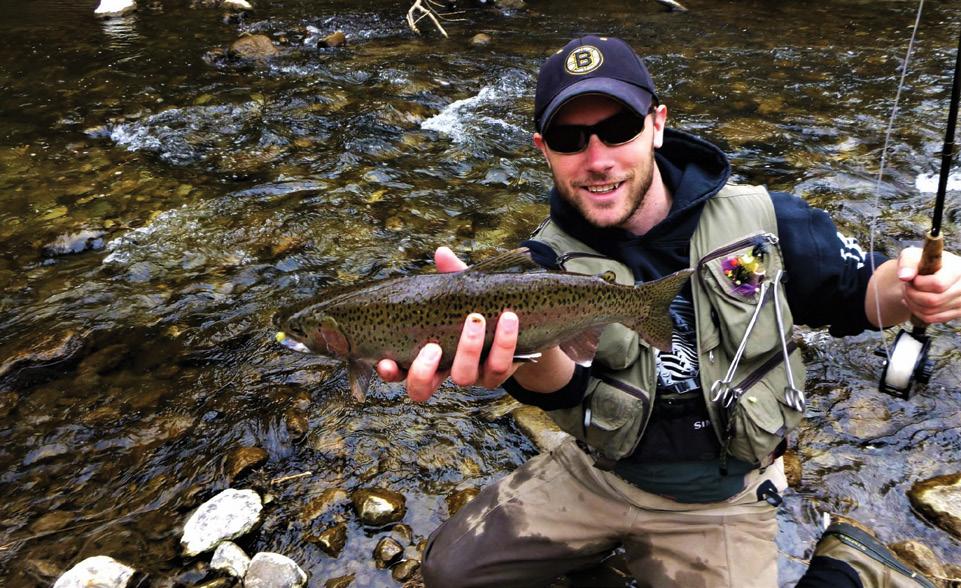
6 minute read
PRESSURE TACTICS
BY MIKE FITZGERALD
MANY ANGLERS, MYSELF included, prefer not to spend their fishing time competing with crowds for limited space. In my home province of Ontario, the congestion is especially noticeable on the Great Lakes tributaries that have autumn migrations of steelhead. Even if you have a full-time job and can only fish for a handful of hours on weekends, however, it’s still possible to find success on these heavily pressured steelhead waters. The secret is fishing in the places most other anglers overlook. Here’s how to find and catch your own secret stash of steelhead this fall.
Advertisement
The Crowd Factor
STEELHEAD ARE FAIRLY predictable, in that they’ll stack up in the exact same places each autumn as they migrate up the tributaries (these same patterns should generally hold true with West Coast steelhead, too). Early in the fall, the fish sometimes stage in out-of-the-way parts of the river where they won’t be harassed by the spawning Pacific salmon, especially big chinooks, that migrate up the same rivers. As the salmon die off, however, the steelhead then move into the kind of classic pools and runs you’d expect to find them.
The problem is, many anglers know exactly where to find these pockets, so they get a lot of fishing pressure. When that happens, some steelhead drop out of the prime holding locations and move into smaller, less noticeable spots most anglers walk right past without giving a second thought. Those are the secret areas you want to find.
Just keep in mind that fishing for hidden steelhead is not a numbers game. These are the fish to look for when you can only get to the river on weekend afternoons, and the classic spots are thronged with crowds. The key to catching these hidden chromers is to do your research, then employ subtler-than-usual fishing tactics.
The Secret Hideouts
IF YOUR HOME waters take an arse-kicking during the fall migrations, one of the best things you can do is explore the rivers well before the migration even begins. How early? I generally start in late July or early August, when the water is at its lowest. If you’re stuck in a heatwave and the tributaries are dry, there’s no better time to go scouting for steelhead hideouts. Also keep in mind that a particularly wet spring, with high runoff, can drastically reshape a river’s characteristics. So for that reason alone, I walk my favourite rivers at least once a year during summer, in case the spring floods created new hiding spots.
What exactly should you search for? For starters, take a walk both upstream and downstream of the popular fishing spots that are lined with anglers during the weekends. As you’re walking, look for nooks and crannies that seem like they could hold a handful of steelhead when the water gets much higher. One common spot is where a couple of boulders create a tongue, just big enough to fit two or three steelhead underneath. Shallow logjams or broken retaining walls can also be good.
Another one of my favourite places is where erosion has exposed the clay on the river bottom. Steelhead will often position themselves where the rocky bottom meets the clay, usually on a bend in the river, making them practically invisible. Add a tree hanging over the water to provide shade and protection from predators above, and you’ve got yourself a winner.
To really get the lowdown on spots such as these, I often peer into them using a GoPro camera mounted on a broom handle. You wouldn’t believe how many boulders on my favourite stream have spaces under them just big enough to hide a steelhead. But without seeing them for yourself during low-water scouting missions, you would never know these spots were even there.
Sometimes when the camera doesn’t give me a good overall sense of an area, I’ll go snorkeling instead to get the full scoop. Some years ago while doing this, I discovered a crack in the foundation of a bridge support, directly beneath a major highway. I had already suspected something was going on beneath the surface there—the previous autumn, I watched a large, fresh steelhead approach the support then literally disappear. As it turned out, the crack was large enough to hide a half-dozen fish during the fall run. That was in 2014, and since then I’ve watched plenty of folks walk right past it, not once stopping to fish.
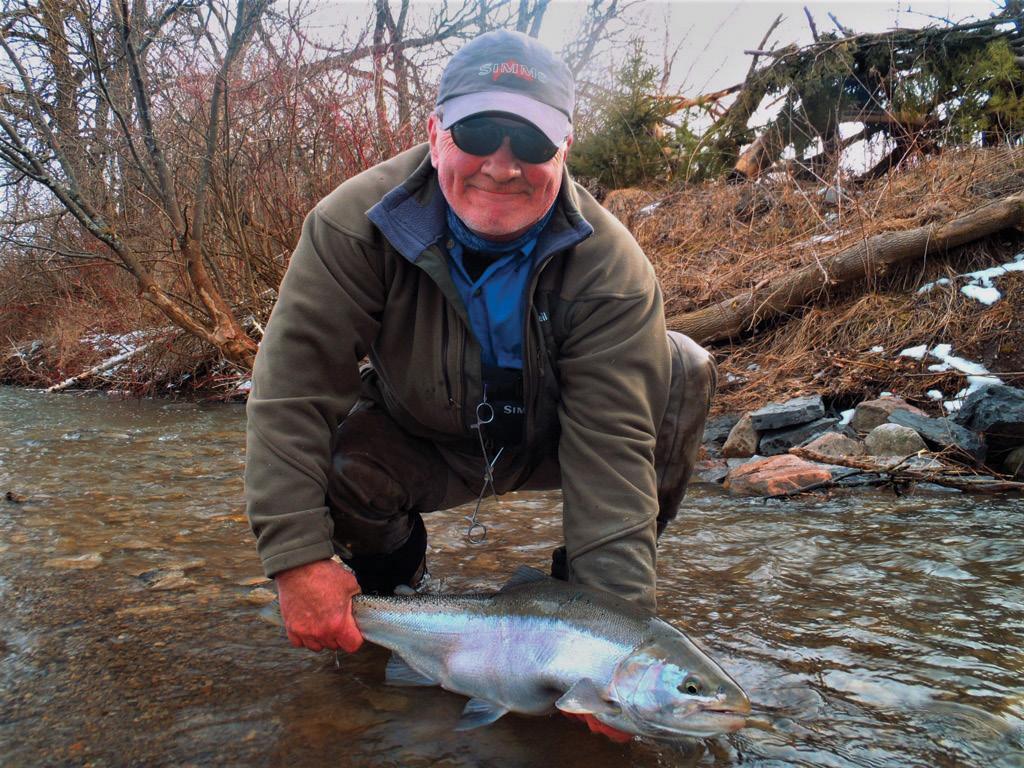
As a bonus, these same spots where steelhead hide during the fall also act as fantastic holding areas during the peak of the spring migration, when the fish are bent on getting as far upstream as possible in the shortest amount of time.
The Salmon Influence
GENERALLY, STEELHEAD DON’T like to mix with chinook salmon, but if the conditions are right in September, they will migrate into the rivers at the same time; the earliest I’ve found steelhead on my home waters was September 10. When this occurs, as noted earlier, the salmon quickly displace the smaller steelhead, pushing them into skinnier, secondary locations. So, even if the fishing pressure isn’t heavy, it’s best to head straight to those places. Steelhead will also sometimes position themselves downstream of spawning salmon to gobble up their eggs. While this isn’t as common as we all wish it would be, it does happen, especially if the salmon are spawning just upstream from a deeper holding area. In such deeper areas, the steelhead can avoid conflict with the exceptionally aggressive chinooks, yet still remain close to the eggs drifting by. The bigger the spawning riffle, and the more salmon that are using it, the more likely there could be a couple of steelhead downstream gorging on eggs.
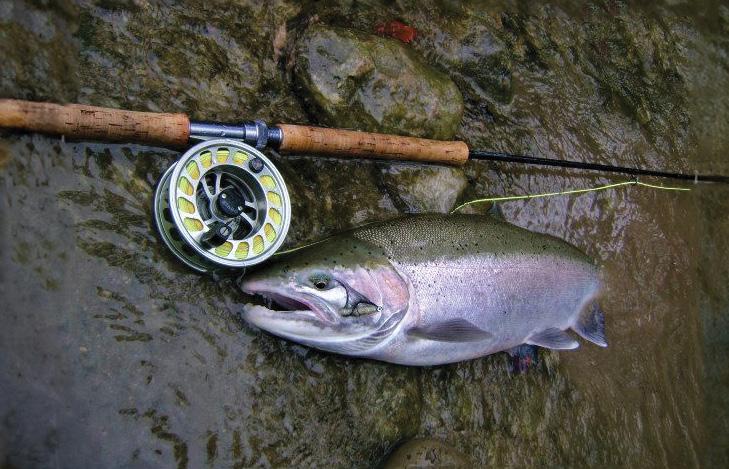
Many anglers who look for these egg-eating steel- head never find them, however, because they search too close to the salmon. Instead, start looking at least 10 to 15 metres downstream of the salmon, in the next spot where the depth increases. Even what seems like an insignificant depression in the river bottom can, and will, hold steelhead, especially if the water is high after a rainfall and the clarity is a bit off.
As yet another bonus, these same places are often the preferred fall hiding places of migratory brown trout. It can really light up your day when you’re fishing one of these hideaways for steelhead and also pluck out a couple of beautiful migratory browns.
THE TACKLE & TACTICS
THE IMPORTANT THING to remember when you finally start fishing the secondary spots you discovered is that these are pressured fish. Whether the pressure came from bigger spawning salmon or angling activity, these steelhead have fled from the places they feel most safe and secure. Secondary hiding spots also often require steelhead to expend more energy to stay in place, which means they need to take in more calories. Still, these are going to be nervous fish, and they will almost never take a big meal.
For bait, you can never go wrong with trout worms, or wrigglers, which are smaller than nightcrawlers and redder in colour. They’re sold at some bait shops, but you can also collect your own at night from April through to October immediately following a good rain. If I can’t get my hands on some lively wrigglers, I’ll usually run nymph flies or highly realistic, soft-plastic nymph imitations. Mayfly and stonefly nymphs, along with hellgrammites, can be absolutely deadly on pressured steelhead.
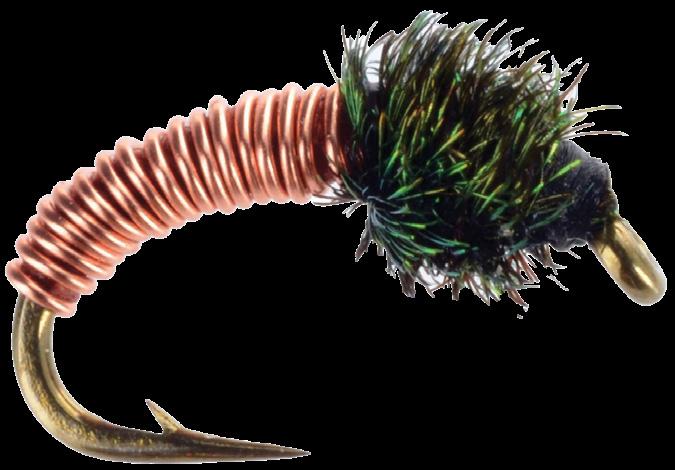

One of my favourite soft-plastics for steelhead is True North Baits’ Mini M’eh Fly, in the 1.3-inch size. I rig it on a size 10 Raven hook, with two small splitshot about a foot above it. With flies, stick with nymphs a size smaller than you’d usually use. I’ve had good success drifting versions with all-wire bodies, such as Brassies and Copper Johns. They’re small yet heavily weighted with a thin profile, so they can get down in front of the fish in faster water.
For delivering baits and lures, I use a medium-action, nine- to 11-foot-long spinning rod. The longer rod helps with getting a drag-free drift for this type of close-quarters fishing. I spool up with six-pound braid and add a six- or even four-pound fluorocarbon leader running from the float all the way to the bait. For fly gear, choose a nine-foot-long, 7- to 9-weight outfit, with a large-arbor reel to manage those drag-burning steelhead runs.
The Persistence Game
I CAN’T TELL you how many times I’ve done everything right, but still walked away from the river empty-handed. That’s fall fishing in pressured steelhead tributaries, for you. No matter how much water you cover, and how hard you fish, sometimes those hidden steelhead just aren’t there. But don’t give up on your spots. Autumn steelhead are notorious for slipping unnoticed into the tributaries, often in water conditions you’d never suspect a fish that large would tolerate. Try again a few days later, and you may well find them tucked against that shallow logjam or under that boulder, finally giving you a chance to pull up some hidden chrome. OC
ALSO SEE MIKE FITZGERALD’S HOMAGE TO “THE SIT,” NEXT PAGE.
Regs Reminder
In many jurisdictions, the regulations covering autumn fishing in rivers can be quite complicated. Sometimes, steelhead will come up a river when the typical trout season is still open, but later in the season, the rules can change. And one tributary could have kilometres of legal fishing water, while another may only have a few hundred metres. Plus, the rules can change from year to year. With that in mind, always read the regs carefully to make sure you know exactly where you’re allowed to be—and when you’re allowed to be there.
Follow us on social media and keep up-to-date with Canada’s only national fishing and hunting magazine.

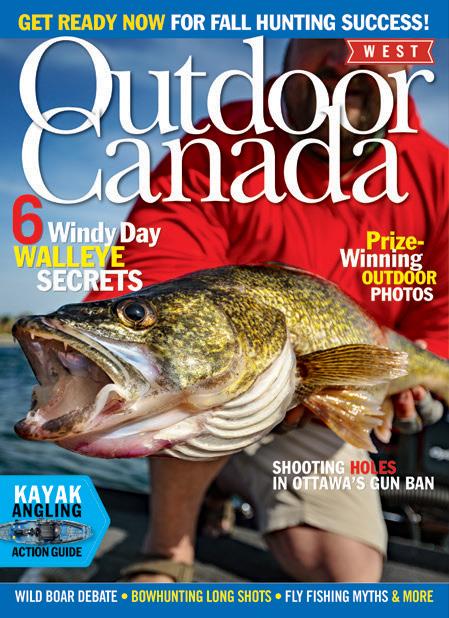
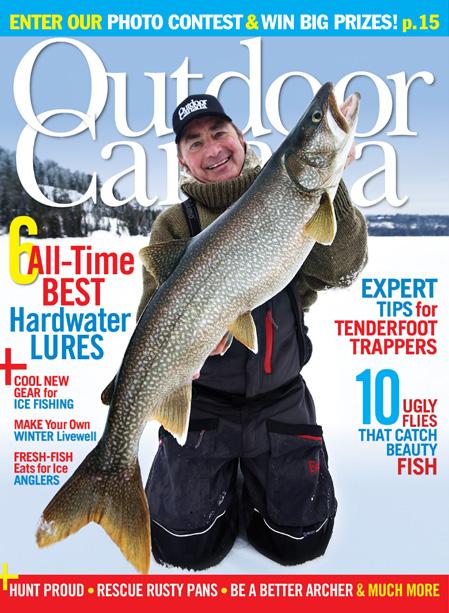
Homage
BY MIKE FITZGERALD










